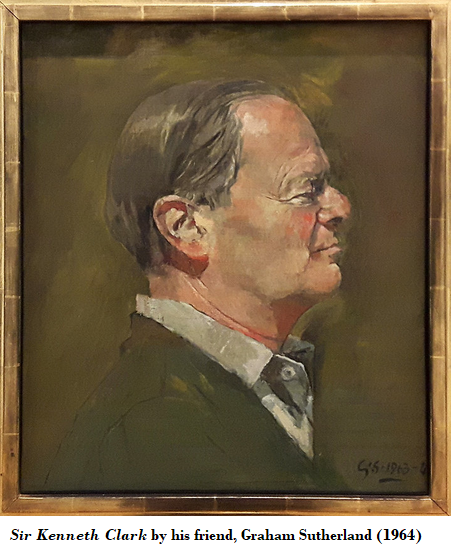
This week our theme is Grandeur and Obedience, which sees us return to Rome in the era after the Holy City’s sacking in 1527. In the shadows of Michelangelo and Bernini, Clark describes the Catholic Counter-Reformation as a massive response to the rebellion of the Protestant North, and also explores the Church’s new splendour symbolised by the glory of St. Peter’s.
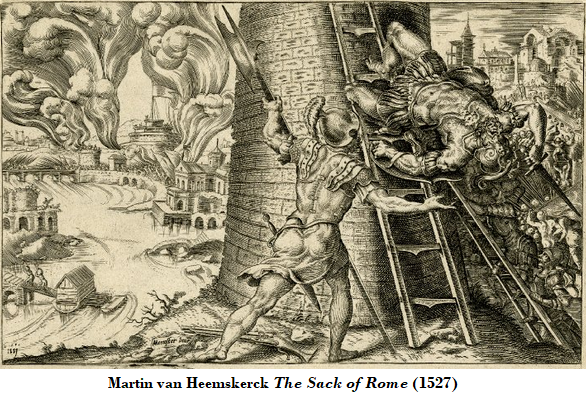
The Sack of Rome: Clark begins by comparing the grandeur and order of contemporary Rome, “the most grandiose piece of town planning ever attempted,” and “done only 50 years after Rome had been completely humiliated – almost wiped off the map.” Clark almost undersells the scale of this calamity: the Holy City been sacked, pillaged, looted, its artistic treasures destroyed or stolen, its religious treasures despoiled, and its citizens raped, robbed, and murdered. Its population fell from 55,000 to 10,000 as its people died or fled.
Unbridled Hatred: The Sack of Rome began on 6 May 1527 after the Holy Roman Emperor, Charles V refused to pay his army after its victory over the French-led League of Cognac in Northern Italy. The Papal States had been part of the League and the troops mutinied and marched on Rome, determined to take by plunder from their enemy what they had been denied by their Imperial paymaster. The 34,000 battle-hardened soldiers included 14,000 Landsknechts ~ fearsome German mercenaries and self-styled Lutherans who nurtured a hatred of the Catholic Church and especially the Pope. There were also Spanish and Italian troops, along with innumerable bandits and deserters from the defeated League army. They all had one objective: to rape and pillage the 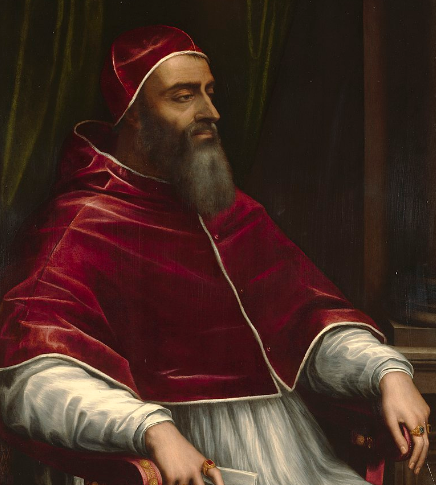 fabled Holy City.
fabled Holy City.
Obscene Parodies: The 5,000 militiamen defending the city were swept aside, and the survivors later murdered; while the 189 Swiss Guards protecting Pope Clement VII (left) died as he made his escape. From the safety of a nearby fortress he watched as the atrocities began, starting with the massacre of the desperate masses at the doors of the fortress below, begging for sanctuary. The slaughter continued with the patients in the hospitals and then consumed the entire city over the next eight days. The Venetian envoy left a vivid description:
The religious were the main victims of the Lutheran fury. Cardinals’ palaces were plundered, churches profaned, priests and monks killed or made slaves, nuns raped and sold at markets. Obscene parodies of the Mass and other religious ceremonies were carried out: the Sacred Host was roasted in a pan and fed to animals; the tombs of saints were violated; the heads of the statues of the Apostles were used as footballs; a donkey was dressed in ecclesiastical robes, led to the Communion rail, and the priest who protested was hacked to pieces. The City was outraged in its religious symbols and in its most sacred memories. Hell is nothing in comparison with the appearance Rome currently presents.
It was taken for granted that this was well-earned Divine punishment for the infamous corruption of the Renaissance Popes.
Recovery: And yet, as Clark observes, Rome recovered, as indeed did the Papacy! Indeed, “what is more important to us, it became once more a great spiritual force,” a fact soon demonstrated in art, but more importantly in the pursuit of wide-ranging reform, the founding of new religious orders, especially the Jesuits, and the Council of Trent.
A Civilising Force? But, asks Clark, was this resurrected Rome a civilising force? Speaking in the mid-20th century, Clark observes that
…in England we tend to answer no. We have been conditioned by generations of liberal, Protestant historians who tell us that no society based on obedience, repression and superstition can be really civilised.
And yet,
no one with an ounce of historical feeling or philosophic detachment can be blind to the great ideals, to the passionate belief in sanctity, to the expenditure of human genius in the service of God, which are made triumphantly visible to us with every step we take in Baroque Rome.
A Popular Movement: Moreover, far from being oppressive, the Catholic Counter-Reformation was, according to Clark.
a popular movement that gave ordinary people a means of satisfying, through ritual, images and symbols, their deepest impulses, so that their minds were at peace
Last Judgement: And yet something had changed fundamentally. As Clark makes clear
something very drastic had happened to the imagination of Christendom.
A far darker view of the human condition has (re-)asserted itself. This can be seen in Michelangelo’s Last Judgement, a massive pictorial juggernaut (a detail below) that covers an entire wall of the Sistine Chapel above the Altar. It was, Clark explains, “commissioned by Clement VII as a kind of atonement for the Sack,” but completed in 1541 under Paul III as a warning “of the fate that would befall heretics and schismatics.”
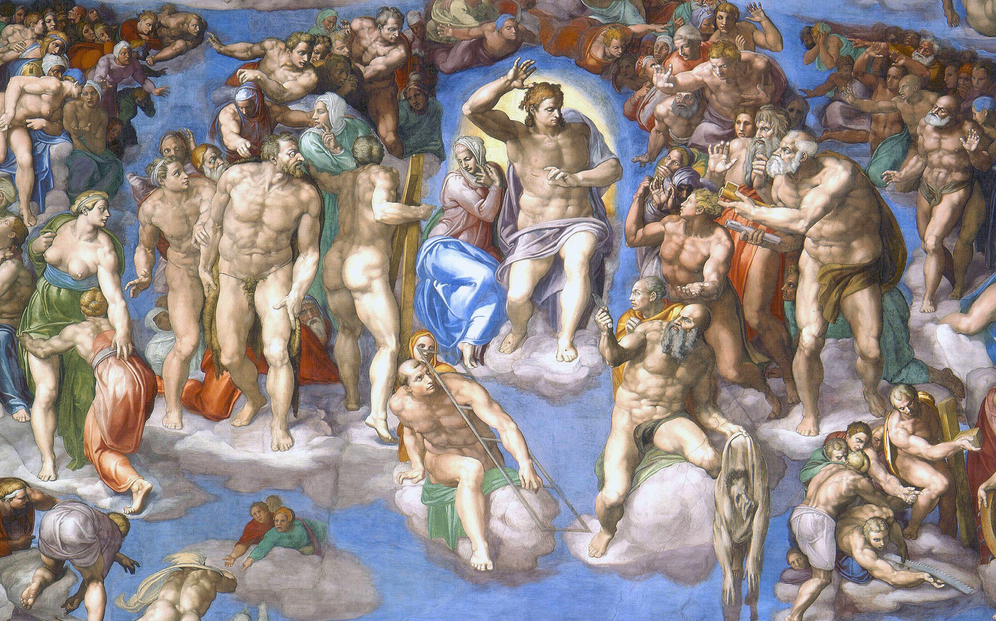
Staring into Oblivion: And what a warning! Christ the judge dominates the centre of the composition, around which the events of the Last Judgement unfold. On his right the saved elect gaze in awe and relief at their Saviour, while far below more of their fortunate brethren rise from their graves and begin their ascent into Heaven. On his left, the masses of the damned struggle and plead for mercy as they begin their descent into Hell, dragged down by demons, while, far below, more of the reprobate are ferried across the River Styx and driven towards the Hell Mouth, which 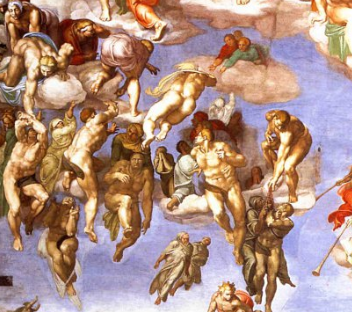 looms directly over the Chapel Altar, in the line of sight of all those attending Mass.
looms directly over the Chapel Altar, in the line of sight of all those attending Mass.
If this narrative is too familiar, Michelangelo includes many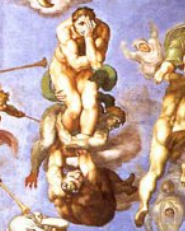 telling details. For example, the saved don’t find their ascent easy; many struggle (right) and have to be pulled up to salvation. Elsewhere, one of the damned stares into oblivion and out of the picture, his hand half-covering his face (left) as if he’s too afraid to look, his expression one of final resignation and horror.
telling details. For example, the saved don’t find their ascent easy; many struggle (right) and have to be pulled up to salvation. Elsewhere, one of the damned stares into oblivion and out of the picture, his hand half-covering his face (left) as if he’s too afraid to look, his expression one of final resignation and horror.
How great is the contrast of this dread-filled figure with the composed and tranquil Adam (below) at the moment of creation, depicted on the Chapel ceiling by Michelangelo some 30 years earlier?
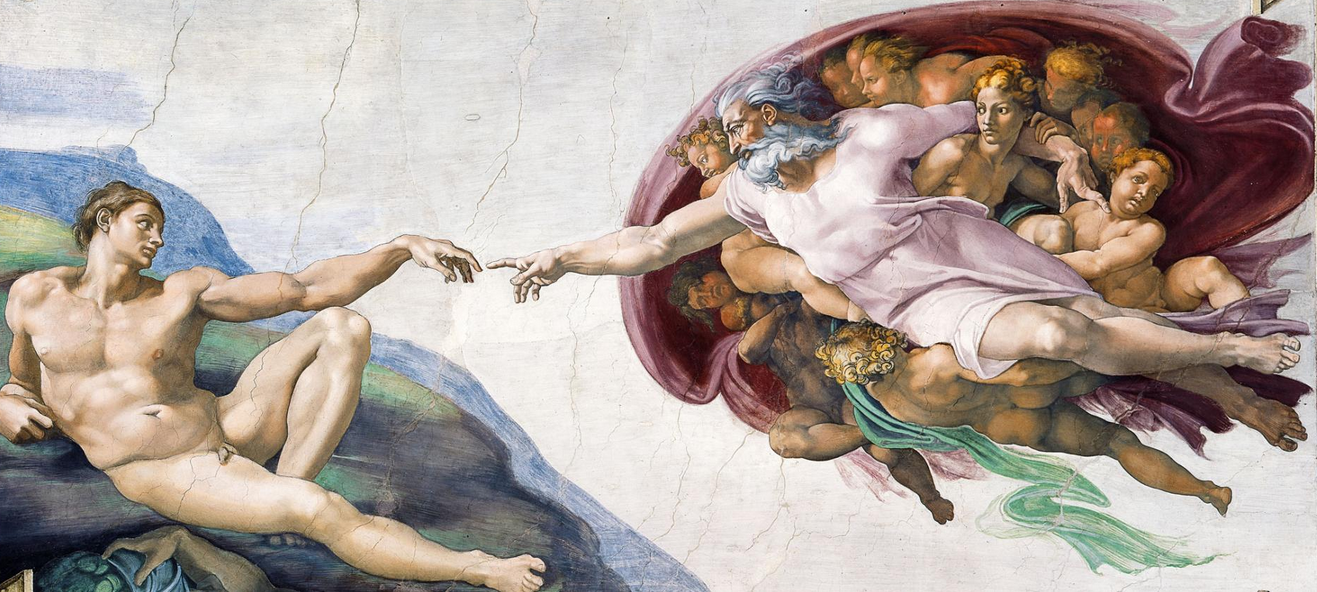
St Bartholomew: And what are we to make of the older, massive figure sitting almost immediately under Christ, holding a knife in one hand and a human skin in the other? This is St Bartholomew, one of the Twelve Apostles, who was martyred on his missionary journey to Armenia by being flayed alive. Consequently, he is usually depicted holding his own skin and/or the knife used. Unsurprisingly, St Bartholomew (below) is the patron saint of tanners.
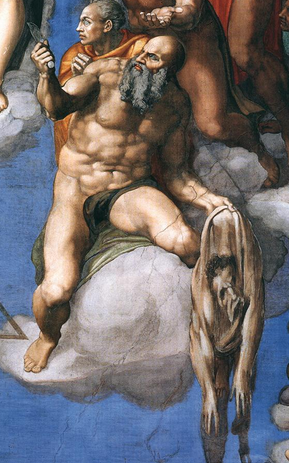
Liberated Soul: But why does the shed skin bear the image of Michelangelo’s own face? The answer lies in the Neoplatonism of the Florentine Academy into which Michelangelo had been initiated as a young man. According to its teachings, the human soul is imprisoned within the body and condemned to an ignorant, brutish, and transient existence from which some great souls (e.g., poets, artists, and philosophers) seek release. The sloughing off of the skin represents the release of the soul from its corporeal prison and the beginning of its ascent towards unity with the Divine. Michelangelo is indicating that he shares this aspiration.
Spiritual Insight This message is present also in
the mysterious, awe-inspiring frescoes in the Pauline Chapel, where, in the head of St Paul, Michelangelo has shown the pain of spiritual sight and its antecedent blindness.
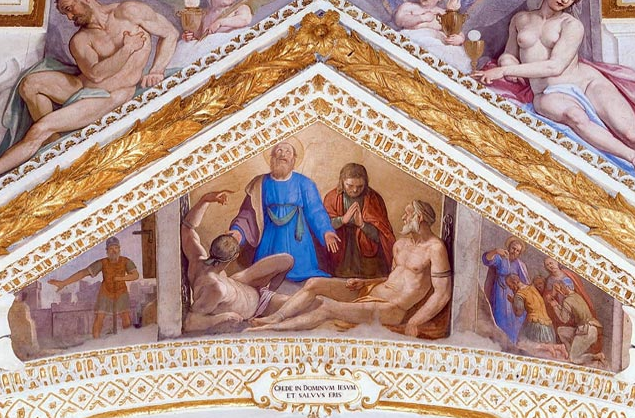
And this is made “all the more moving by the fact that it is an idealised self-portrait.” Once again Michelangelo is using his religious frescoes to make a statement about his own spiritual longings.
Spiritual Link: These were longings shared by many in his era. Consequently,
Michelangelo, by his longevity no less than his genius, became the spiritual link between the Renaissance and the Counter-Reformation.
The Church Militant: In this feverish climate, the Catholic Church resisted calls to compromise its core teachings and practices in order to reach a settlement with the Northern Reformers. Instead, it gloried “in those very doctrines that the Protestants had repudiated,” further polarizing the situation. Moreover, it brought forth dynamic spiritual leaders, including St John of the Cross, St Ignatius Loyola, St Theresa of Avila, St Francis Xavier, St Carlo Borromeo, and St Filipo Neri. Consequently, “the mid-16th century was a period of sanctity in the Roman Church almost equal to the 12th.
Something About Mary: Clark highlights the role that the Virgin Mary played in the Counter-Reformation. He emphasizes the enormous popular following she had and the outrage that could be mobilized once it was pointed out that
the northern heretics were insulting the Virgin [and] wanted to deprive them of that sweet, compassionate, approachable being who would intercede for them with God.
He also returns to his distinction made in an earlier episode between communities of obedience and communities of will. The former embraced the female divine principle, while the latter resisted it, to its detriment. Clark observes that “the great religious art of the world is deeply involved with the female principle,” as the subsequent history of art might illustrate.
Saints & Relics: Similarly with the veneration of the saints and relics; faced with the reformers’ denunciations, “the saints should be made more insistently real and their sufferings and ecstasies vividly recorded,” especially in art.
Flesh & Spirit: And central to this was a preparedness to display the human body in its full corporeality and here Clark makes special mention of Titian, Rubens and particularly Gianlorenzo Bernini: “in their work the conflict between flesh and spirit was gloriously resolved.”
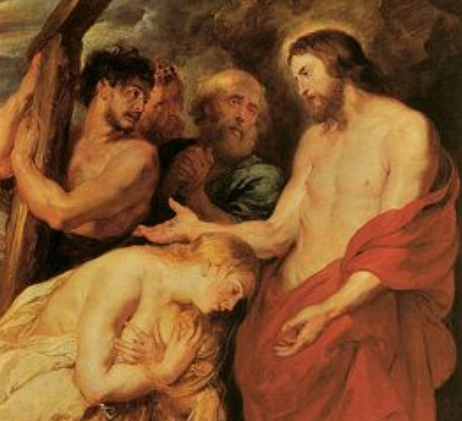
In Sinners saved by Penitence (above), Rubens
achieved in the repentant Magdalene, and even in the figure of Christ himself, a noble sensuality, perfectly at one with an unquestioning faith.
Bernini and the Baroque: Such work looked forward to the Age of the Baroque. Prom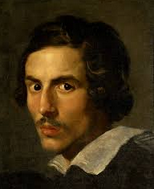 oted by the Church, the baroque style relied on grandeur, exuberant detail, movement, contrast and surprise to evoke a sense of awe at the subject. It was meant to appeal to the emotions, in contrast with the austere art of the Protestant North, which targeted the intellect, and the Humanist art of the early Renaissance, with its concern with geometry, perspective, and references to Classical themes. Central to this shift was Bernini (right), “the chief source of an international style [i.e., the Baroque] that spread all over Europe, as Gothic had done, but as the Renaissance style never did.”
oted by the Church, the baroque style relied on grandeur, exuberant detail, movement, contrast and surprise to evoke a sense of awe at the subject. It was meant to appeal to the emotions, in contrast with the austere art of the Protestant North, which targeted the intellect, and the Humanist art of the early Renaissance, with its concern with geometry, perspective, and references to Classical themes. Central to this shift was Bernini (right), “the chief source of an international style [i.e., the Baroque] that spread all over Europe, as Gothic had done, but as the Renaissance style never did.”
Dazzlingly Precocious Bernini was “dazzlingly precocious.” One of his greatest works is the monumental Baldacchino di San Pietro, a massive sculpted bronze canopy (below), which covers the high altar of St. Peter’s Basilica as well as the tomb of the saint.
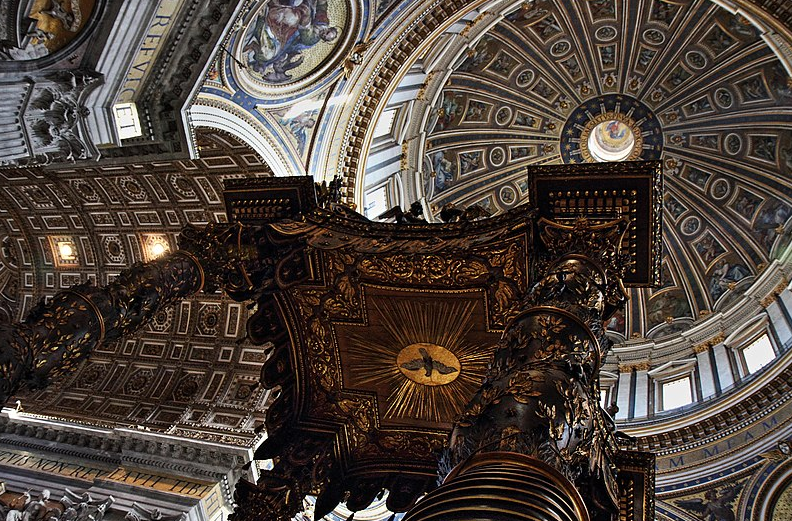
Master Sculptor: Bernini “became more skilful in the carving of marble than any sculptor has ever been,” a judgement that invites comparison with Michelangelo. This can be done if his David is compared with Michelangelo’s; Bernini’s “catches the sudden twist of action,” and the facial expression is far more focussed and intense than the earlier great work. Clark also cites Apollo and Daphne as “an even more extraordinary example of how marble can be made into something fluid and fleeting,” as Daphne breathes her last as she is transformed into a laurel tree.
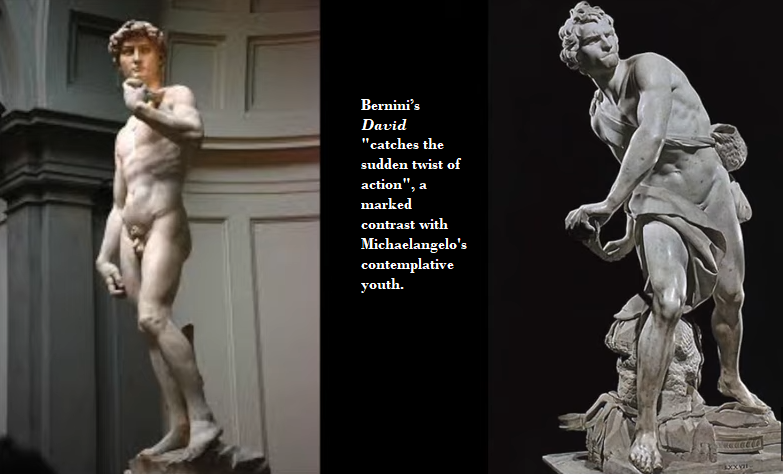
The Ecstasy of St Teresa: Possibly the ultimate compliment that can be paid to Bernini is to compare his Ecstasy of St Teresa (below) with Michelangelo’s Pieta. For Clark, the Ecstasy is
one of the most deeply moving works in European art. Bernini’s gift of sympathetic imagination — a gift enhanced by his practice of St Ignatius’ Spiritual Exercises — is used to convey the rarest and most precious of all emotional states, that of religious ecstasy.
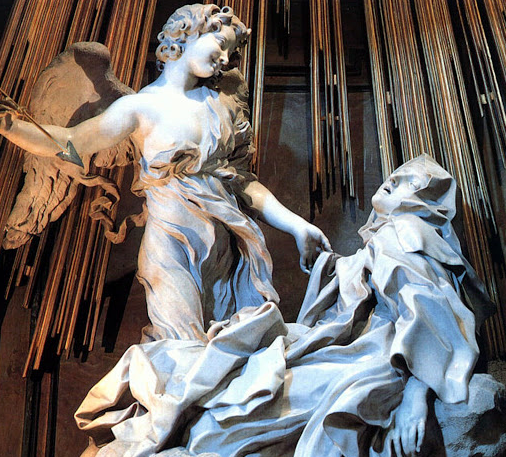
Voluptuousness: However, despite its breathtaking beauty, the statue became controversial, and was condemned by some as a profane expression of voluptuousness. Clark observes that while
“all art is to some extent an illusion, depending on how far from direct experience the artist is prepared to go.” Bernini, he concludes “went very far,” especially “when one remembers the historical St Teresa, with her plain, dauntless, sensible face. The contrast with the swooning sensuous beauty of the Ecstasy is almost shocking”.
Exploitation? Finally, Clark contemplates the underlying exploitation that made possible the immense investment upon which great art depends:
The pursuit of grandeur is natural but carried too far it becomes inhuman.
These are thoughts to which we will return as the weeks go by.
 Sign In
Sign In 0 Items (
0 Items ( Search
Search










I’m still struck by the contrast between Clark’s surroundings and my suburban existence on the far side of the earth. How relevant really is baroque art and architecture to me, except perhaps as an imagined context for baroque music? And am I deceiving myself in imagining that the full ‘message’ of baroque music is even accessible to me, given my remoteness from the baroque period in space and time? As a Protestant with a love of music, I revel, of course in the compositions of J. S. Bach. But even so I wonder about the meaningfulness of the church cantatas when performed by unbelieving anti-Christian musicians for secular consumption – and that consumption often occurring in suburban living rooms that regularly feature scenes on video that would have horrified the composer and his audiences.
I’m happy to accept – to admire – to be grateful to – Clark as a mighty advocate of Western civilisation. He is illuminating, masterful, persuasive. But he’s not convincing me that the what he is describing has a lot of relevance if we want to define how things stand with Western civilisation in our post-modern world. And particularly I’m still wondering whether his personal, emotional investment in the art and architecture of Roman Catholicism is distorting his historical lens. Even so, one can read his books, and watch or listen to his masterful presentations – and learn to ponder greatness.
Stephen Due might like to consider ‘How Should We Then Live: The Rise and Decline of Western Thought and Culture’ by the conservative Protestant, Francis Schaeffer. It was a 1970s documentary series and book conceived as a response to Clark and was very influential, especially in the USA.
Thanks MB. Will do.